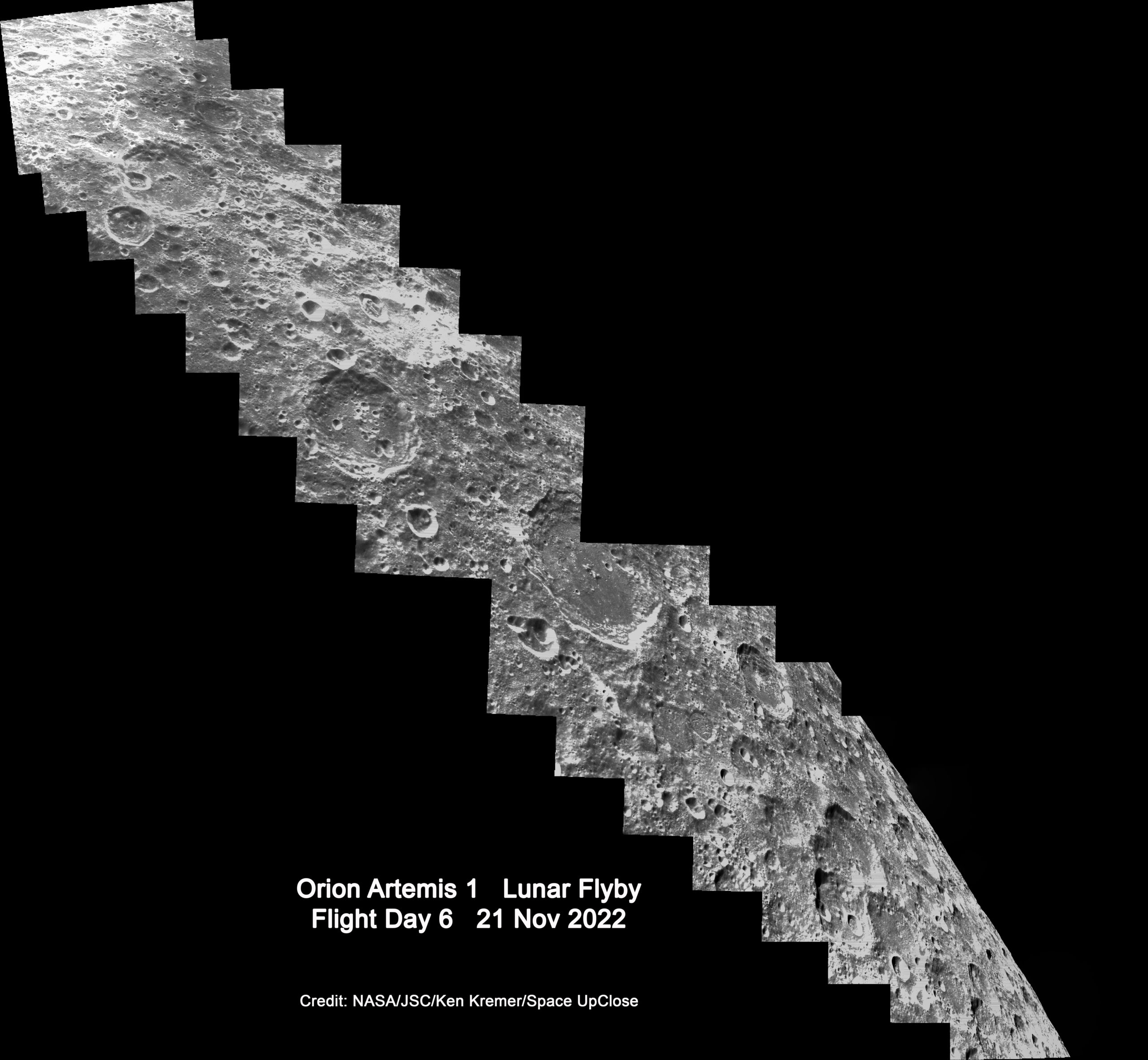
For SpaceUpClose.com & RocketSTEM
CAPE CANAVERAL, FL – NASA’s Orion Artemis 1 spacecraft captured stunning up close imagery of the tortured lunar surface terrain during the unpiloted vehicles 1st close flyby orbiting around the Moon’s far side on Flight Day 6 of the test flight mission on 21 Nov. 2022.
I’ve created a trio of up close lunar mosaics from the detailed images taken by Orion by stitching together NASA black and white raw images taken by the optical navigation camera – showing the heavily cratered surface and illustrating this story.
The lead mosaic shows the entire ground track of the pockmarked surface of our nearest celestial neighbor as seen in 17 raw images snapped by Orion soaring over the Moon during its closest approach Nov. 21.
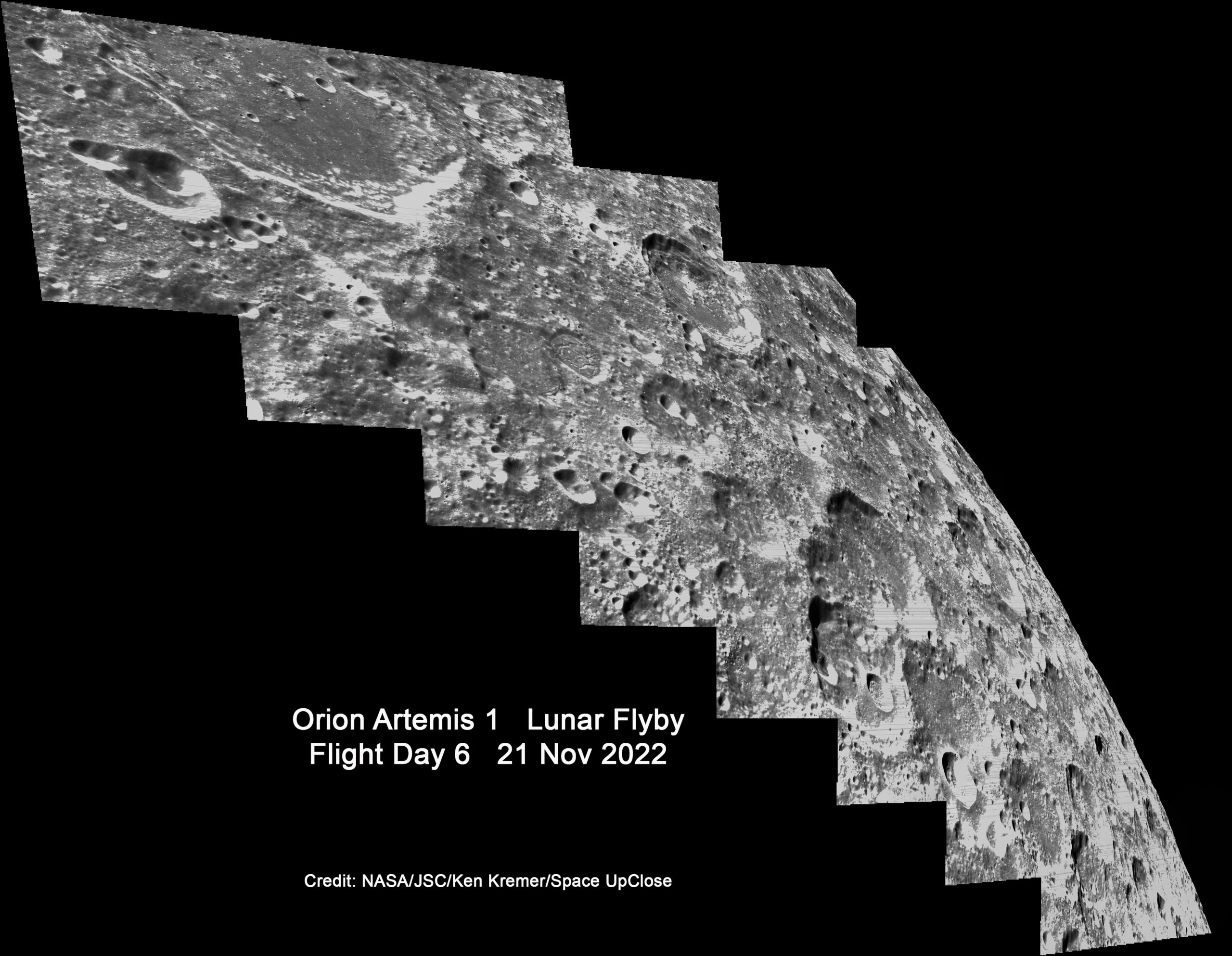
The other two mosaics show the detailed upper and lower halves individually, across out to the Moon’s limb and the blackness of space.
Artemis 1 is paving the way for America’s return to the Moon with astronauts on the next flight on Artemis 2 set for launch in 2024 and eventually the next lunar landing on Artemis 3 around mid-decade and no earlier than late 2025.
“Orion uses the optical navigation camera to capture imagery of the Earth and the Moon at different phases and distances, providing an enhanced body of data to certify its effectiveness under different lighting conditions as a way to help orient the spacecraft on future missions with crew,” according to a NASA description.

“Because of the unbelievable can-do spirit, Artemis 1 has had extraordinary success and completed a series of history-making events. Artemis builds on Apollo,” said NASA Administrator Bill Nelson, at the Nov. 28 media briefing.
“Not only are we going faster and farther, but Artemis is paving the way to live and work in deep space in a hostile environment, to invent, to create and ultimately to go on with humans to Mars.”

Orion captured the detailed raw images with the optical navigation camera during the period around the period of the outbound powered flyby (OPF) burn slingshotting it around the far side that helped place the capsule on course for the Distant Retrograde Orbit (DRO).
The OPF burn was performed by Orion’s Orbital Maneuvering System (OMS) main engine
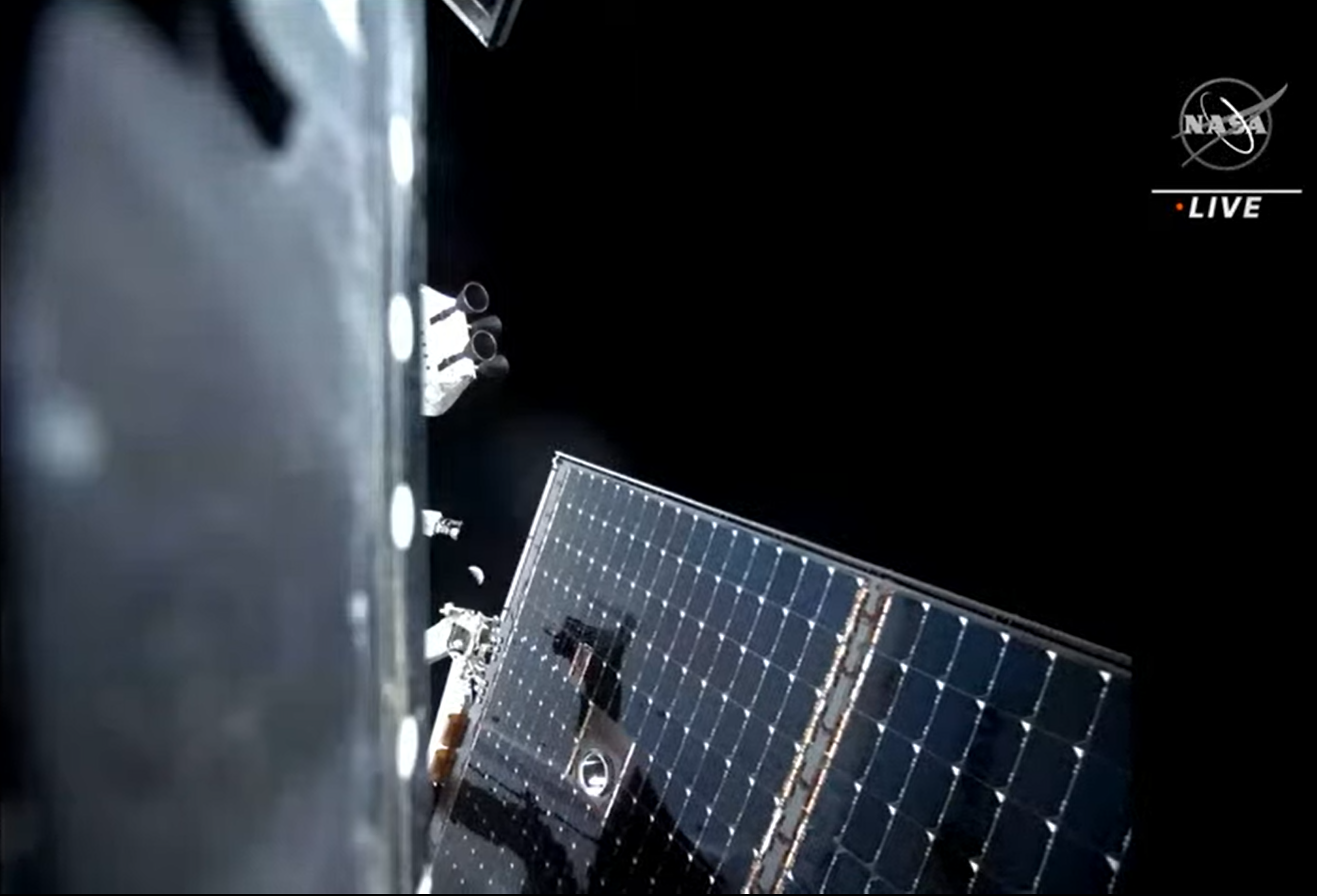
Orion fired the 6000 lb thrust OMS main engine for 2 minutes and 30 seconds during OPF burn while traveling about 5023 mph at about 328 miles (528 km) altitude.
Orion flew by at an altitude of only 81 miles (130 km) above the Moon on Nov. 21 while traveling about 231,000 miles from Earth.
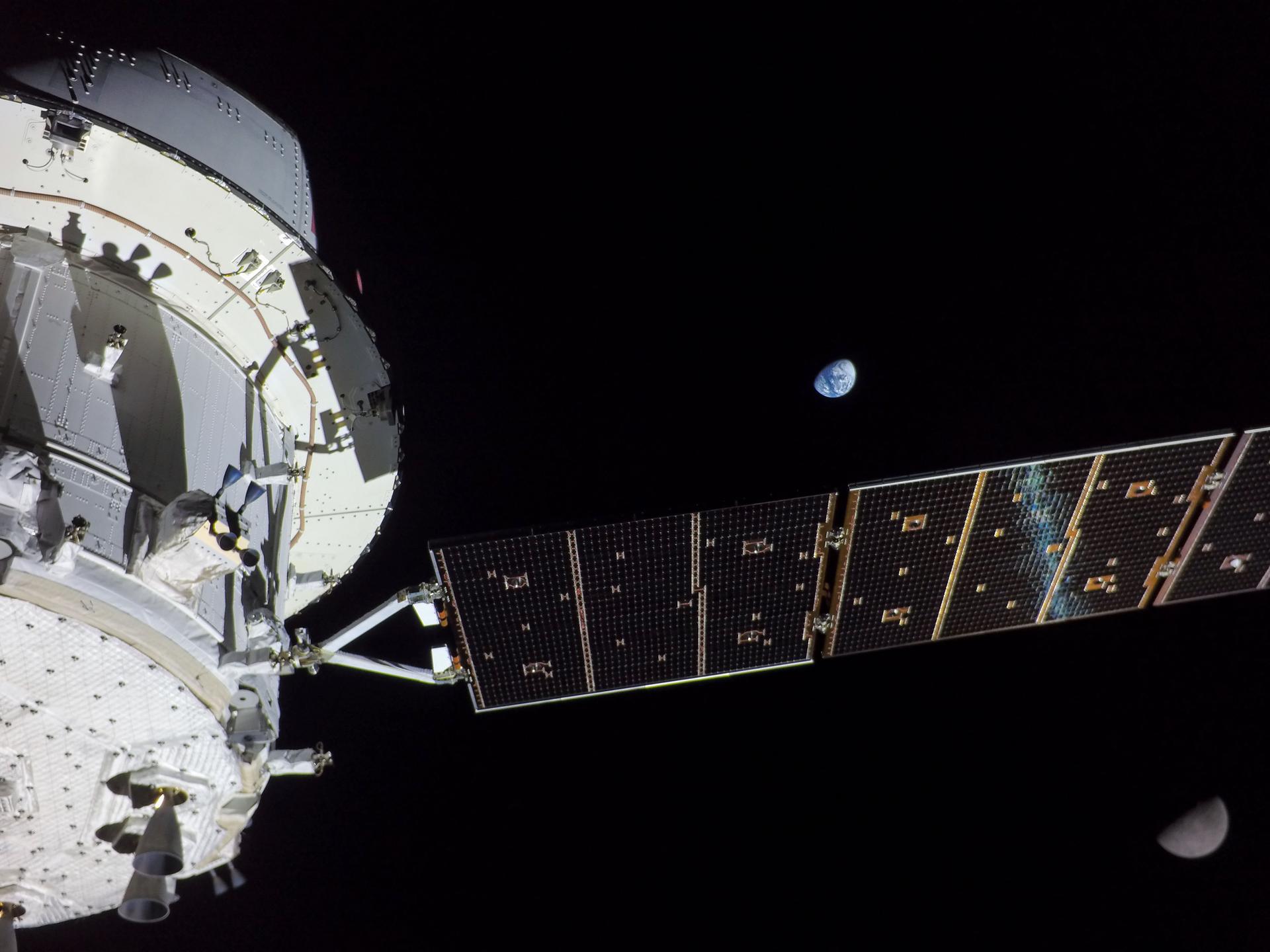
Shortly after the outbound flyby burn, Orion passed about 1,400 miles above the Apollo 11 landing site at Tranquility Base at 8:37 a.m. Orion later flew over the Apollo 14 site at about 6,000 miles in altitude and then over the Apollo 12 site at an altitude of about 7,700 miles. Since the lunar surface was in darkness there are no pictures of the Apolo landing sites from Orion’s cameras.
Orion then entered its distant retrograde orbit (DRO) trajectory around the Moon after completing a critical thruster firing on Friday afternoon, Nov. 25, of the OMS main engine also required for the lunar orbit insertion firing on Flight Day 10 of the Artemis 1 unpiloted test flight mission.

Orion remained in DRO orbital trajectory for a half loop around the Moon over about six days in order to test and monitor key systems and perform numerous checkouts in a deep space environment traveling some 40,000 miles above the lunar surface before beginning the journey back to Earth, says NASA.
The spacecraft also captured stunning imagery of Earth and the Moon throughout the lunar approach and orbiting phase including of the Moon and Earth together in selfies with Orion.
All 8 Billion humans are here together as one folk!

The awesome imagery was captured by a camera mounted on Orion’s solar arrays.
Orion was traveling 268,563 miles from our home planet, and 43,138 miles from the Moon, while cruising at 1,679 miles per hour — just after 4 p.m. EST, Nov 28.
Orion Artemis 1 also surpassed the previous human spaceflight distance record of 248,654 miles set by the Apollo 13 crew all the way back in 1970, and just exceeded on Saturday, Nov. 26.
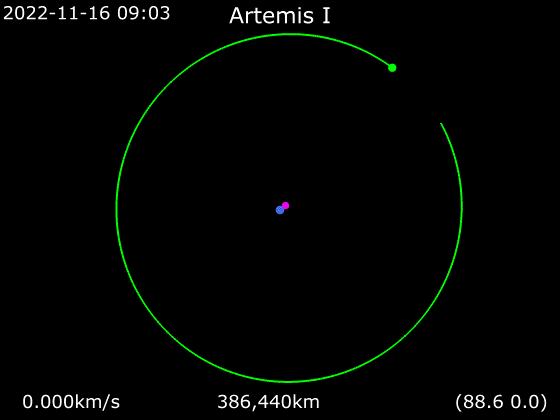
To date now just past the halfway point the Artemis 1 mission has performed flawlessly – with no significant technical issues arising.
NASA is using the DRO orbit for Artemis 1 because it is a very fuel efficient trajectory around the moon requiring minimal thruster firings.
The DRO orbital trajectory purpose is to test Orion to its limits for nearly a month and will not be used on any future Artemis missions.
DRO is “distant” in “the sense that it’s at a high altitude approximately 50,000 miles from the surface of the Moon. Due to the distance, the orbit is so large that it will take the spacecraft six days to complete half of a revolution around the Moon before exiting the orbit for the return journey back to Earth.”
Future Artemis moon landing missions and NASA’s planned Gateway lunar orbiting mini space station will use the NRHO orbit – or near rectilinear halo orbit to provide access to the lunar south pole and caches of lunar water ice inside permanently shadowed craters.
A second close flyby will occur on Monday, Dec. 5, when the spacecraft will fly 79.2 miles (127 km) above the lunar surface and perform the return powered flyby (RPF) burn, which will commit Orion on its course toward Earth.
The RFP burn is the last one of two maneuvers required ahead of Orion’s splashdown in the Pacific Ocean on Dec. 11 – concluding the 25.5 day Artemis 1 test flight that began with liftoff from KSC on Nov. 16.
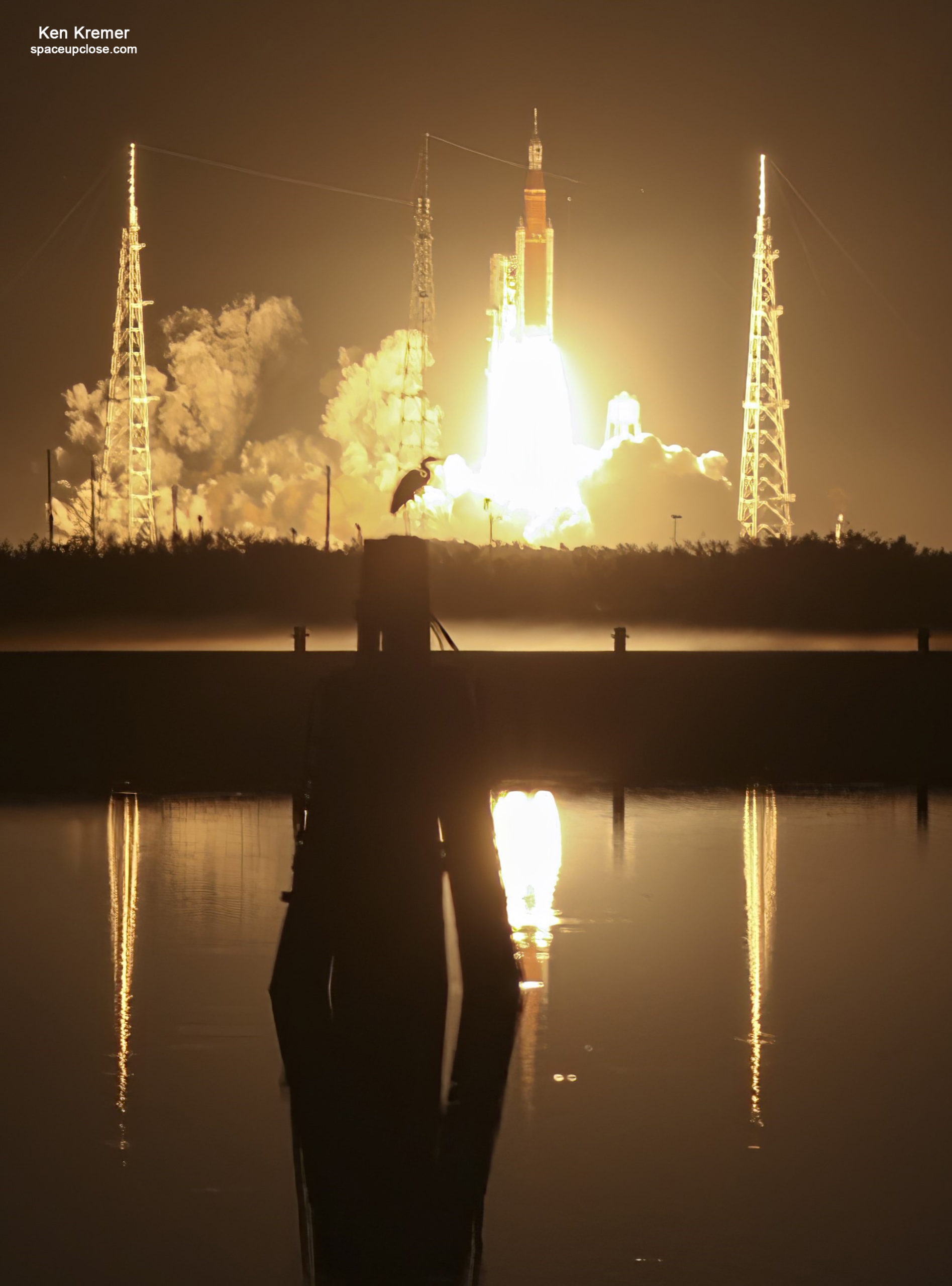
The test flight of the uncrewed Orion capsule began with the stunning debut liftoff of NASA Space Launch System (SLS) mega moon rocket on the Artemis 1 mission at 1:47 a.m. EST (0647 GMT) Wednesday, Nov. 16 from Launch Pad 39B at the Kennedy Space Center in Florida – sending America to the moon with the 1st human rated capsule in 50 years.
SLS now counts as the world’s the most powerful rocket ever built – about 15 to 20% more powerful than NASA’s Apollo Saturn V moon rocket and the Space Shuttle.

The primary objectives for the Artemis 1 mission that must be accomplished following the successful launch and delivery by the SLS moon rocket are: demonstrating Orion’s heat shield at lunar return re-entry conditions, demonstrating operations and facilities during all mission phases, and retrieving the spacecraft after splashdown.

Artemis 1 is the first integrated flight test of the agency’s deep space exploration systems: the Orion spacecraft, Space Launch System (SLS) rocket, and ground systems and the mission is a critical part of NASA’s Moon to Mars exploration strategy.
The 32-story tall Artemis 1 stack is comprised of NASA’s Space Launch System (SLS) Mega moon rocket integrated with the Orion crew spacecraft on top.
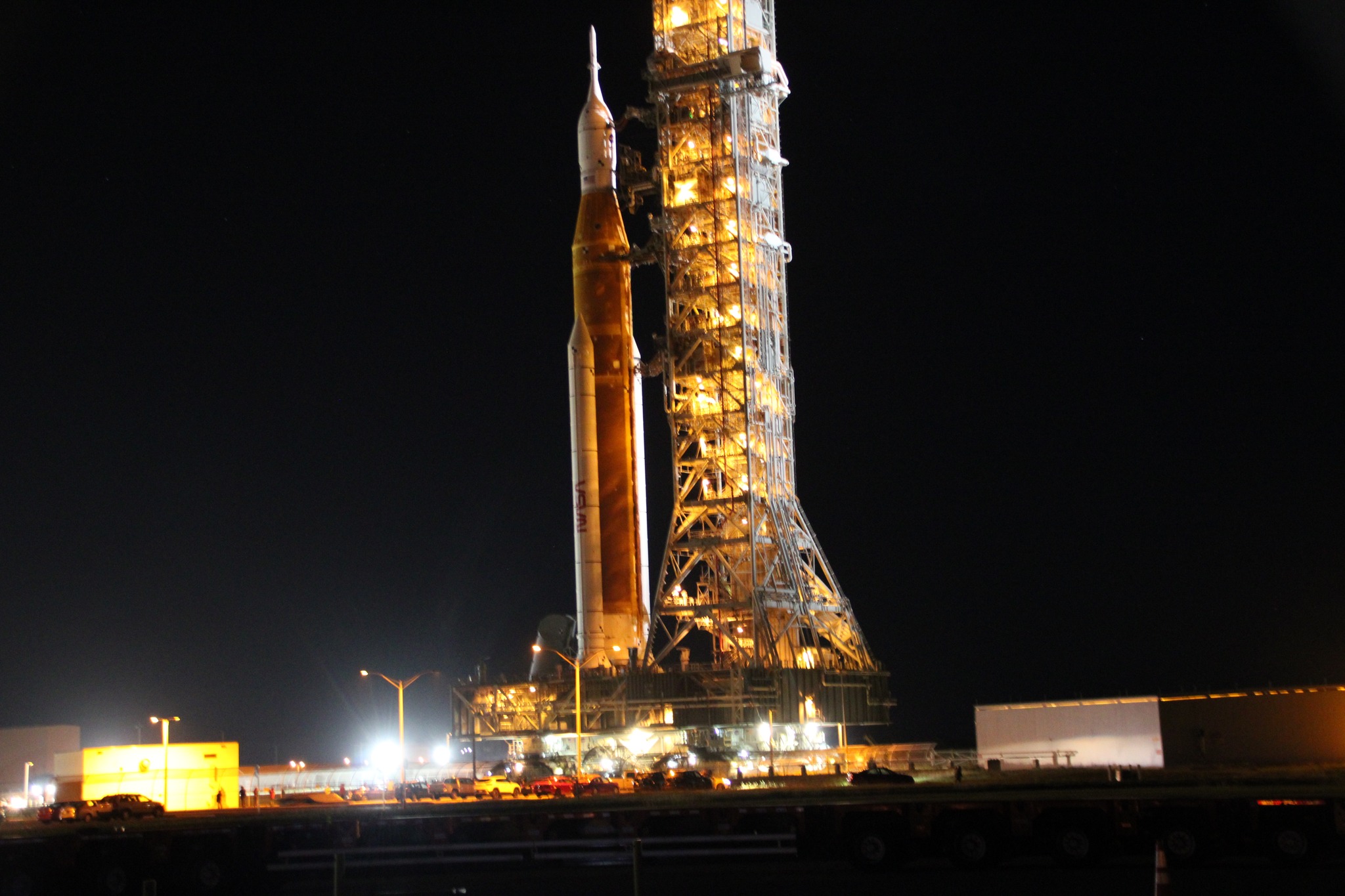
Watch Ken’s commentary about Project Artemis, SpaceX Falcon Heavy, Crew-5, NASA SLS cryo and WDR tests, NASA SpaceX Crew & Cargo Dragons and more
Nov 22: WFTV ABC News Orlando interview about upcoming NASA SpaceX CRS 26 cargo resupply mission to the ISS and science aboard + Artemis 1 launch and Orion crew capsule successfully entering lunar orbit, results and mission goals

Nov 22: Fox 35 interview about upcoming NASA SpaceX CRS 26 cargo resupply mission to the ISS and science aboard + Artemis 1 launch and Orion crew capsule successfully entering lunar orbit, results and mission goals
Nov 21: BBC World TV interview about Orion crew capsule successfully entering lunar orbit, results and mission goals
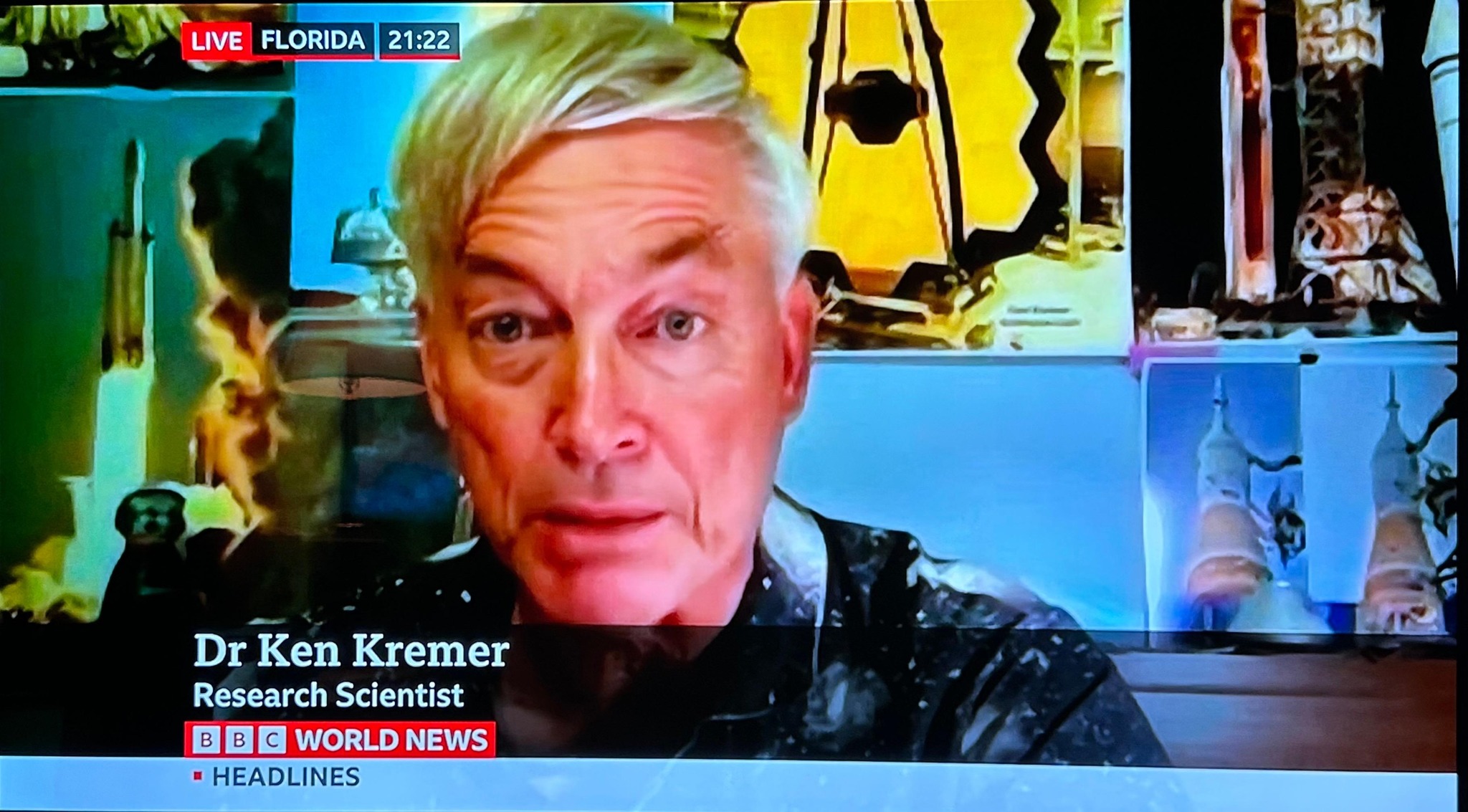
Nov 16: Fox 35 Orlando live and taped interviews about Artemis 1 launch and goals
Nov 15/16: News Nation interview about Artemis 1 launch and goals
Nov 7/8: Fox 35 Orlando – As subtropical storm Nicole approaches KSC and Florida watch my comments about NASA deciding for the moment to keep Artemis 1 moon rocket at pad 39b and not roll back to VAB
https://www.fox35orlando.com/news/nasa-says-its-keeping-artemis-outside-during-major-storm
NASA says it's keeping Artemis on the launch pad. The rocket can withstand winds up to 85 miles an hour. The @NWSMelbourne is predicting windspeeds could very well hit that point in Brevard County – in fact, a Tuesday morning update says windspeeds could be in the 74-110mph range pic.twitter.com/i569eAmi9p
— Marie Edinger FOX 35 (@MarieEdinger) November 8, 2022
Nov 4/5: WFTV ABC News Orlando featured my commentary about Artemis 1 rollout overnight and goals of NASA lunar test flight mission launching Nov 14 at 1207 AM
Nov 4: Fox 35 Orlando featured my commentary about Artemis 1 rollout overnight and goals of NASA lunar test flight mission launching Nov 14
Nov 1: Fox 35 Good Day Orlando morning show featured my live and taped prelaunch interview commentary about SpaceX Falcon Heavy launch with Space Force national security payloads
Nov 1: WFTV ABC News featured my commentary about SpaceX Falcon Heavy launch with Space Force national security payloads
https://news.yahoo.com/watch-lve-spacex-launches-falcon-100341265.html
Oct 31: WFTV ABC News featured my commentary about SpaceX Falcon Heavy launch with Space Force national security payloads
Oct 27: WFTV ABC News and Fox 35 Orlando featured my commentary about Falcon Heavy and the Space Force national security payloads
https://www.fox35orlando.com/video/1137117

Watch Ken’s continuing reports about Artemis, SpaceX missions, SLS, Orion and NASA missions, SpaceX Crew and Cargo Dragons, SpaceX Axiom, JWST, DART, Lucy Asteroid mission, GOES, SpaceX Starlink, Commercial Crew and Starliner and Crew Dragon, Blue Origin and Space Tourism, and onsite for live reporting of upcoming and recent SpaceX and ULA launches including Crew 1 & 2 & 3 & 4 & 5, ISS, Solar Orbiter, Mars 2020 Perseverance and Curiosity rovers, NRO spysats and national security missions and more at the Kennedy Space Center and Cape Canaveral Space Force Station.
Stay tuned here for Ken’s continuing Earth and Planetary science and human spaceflight news: www.spaceupclose.com – twitter @ken_kremer – email: ken at kenkremer.com
Dr. Kremer is a research scientist and journalist based in the KSC area, active in outreach and interviewed regularly on TV and radio about space topics.
………….
Ken’s photos are for sale and he is available for lectures and outreach events
Please consider supporting Ken’s work by purchasing his photos and/or donating at Patreon
https://www.patreon.com/kenkremer
Upcoming and recent space events and talks by Ken Kremer & Jean Wright
Nov 29 at UCF, Orlando Florida: Presentation by Jean Wright – “Sew Sister to the Stars- How the Humble Art of Sewing Transformed the World of Flight”
Nov 25/29 and Dec 5 from 7 to 9 PM Quality Inn, Titusville, FL: Join Ken and Jean for Artemis 1, Falcon Heavy and space mission and rocket launch outreach. Ask us anything. plus display our photos and space apparel items for sale
 NASA Artemis 1 Moon rocket rolling from the Vehicle Assembly Building (VAB) overnight Nov. 4, 2022, atop the mobile launcher to Launch Pad 39B, at NASA’s Kennedy Space Center in Florida. Launch of the uncrewed flight test is targeted for Nov. 14 at 12:07 a.m. EST. Credit: Jean Wright/spaceupclose.com
NASA Artemis 1 Moon rocket rolling from the Vehicle Assembly Building (VAB) overnight Nov. 4, 2022, atop the mobile launcher to Launch Pad 39B, at NASA’s Kennedy Space Center in Florida. Launch of the uncrewed flight test is targeted for Nov. 14 at 12:07 a.m. EST. Credit: Jean Wright/spaceupclose.com
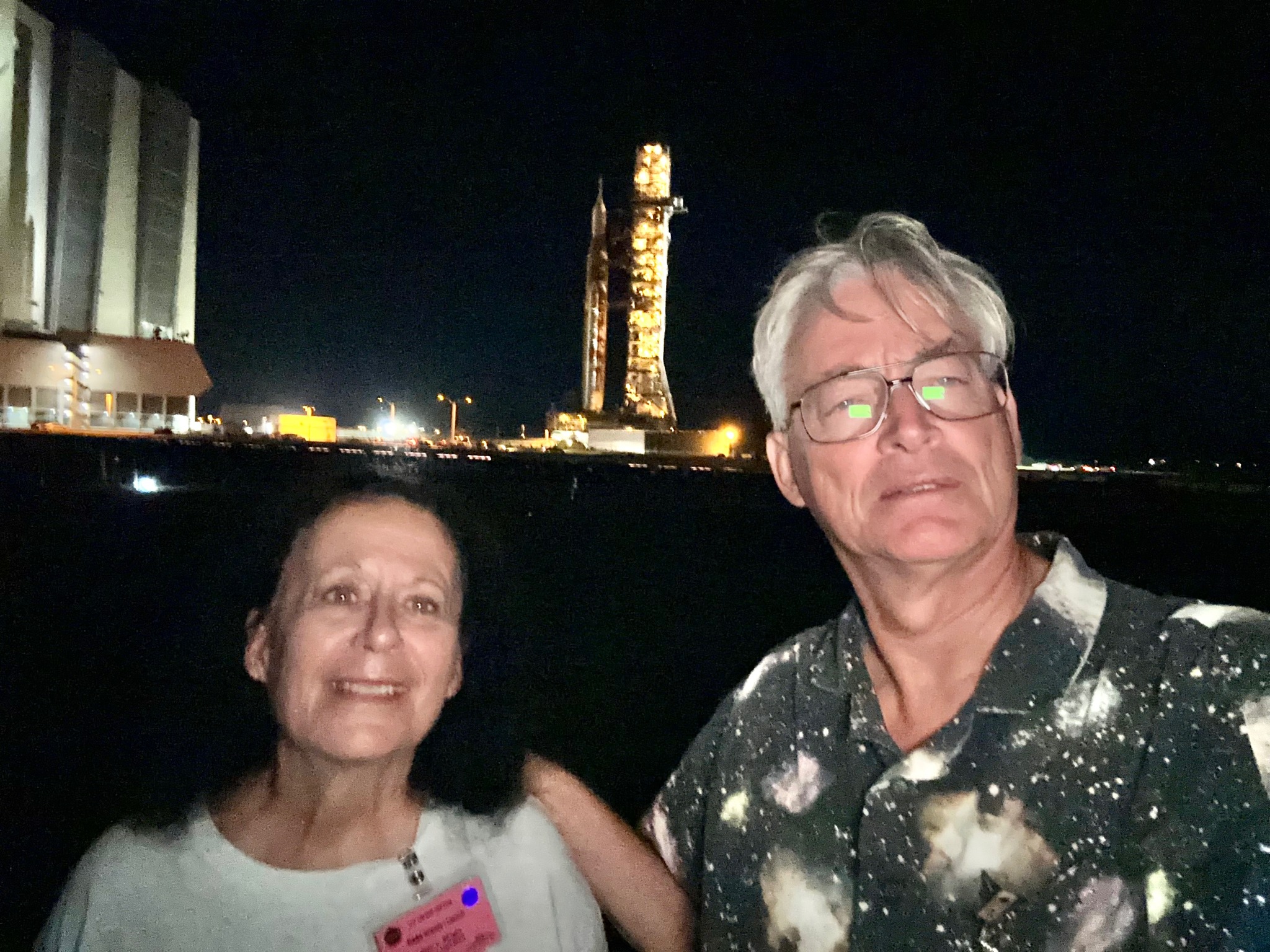
Jean Wright and Ken Kremer of Space UpClose witness rollout of NASA Artemis 1 to launch pad 39B on Nov. 4, 2022 at NASA’s Kennedy Space Center. Credit: Ken Kremer/spaceupclose.com
x



